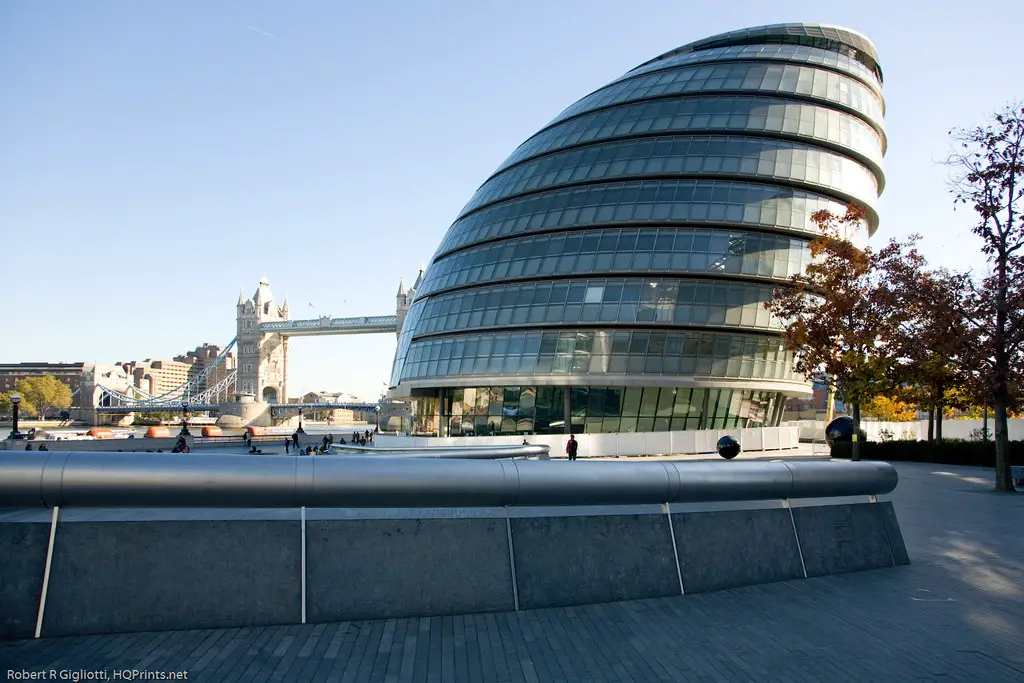Are the London Olympics Missing an Opportunity for Sustainable Development?
London is experiencing massive development as it prepares for the 2012 Olympic Games, but it’s not all stadiums and swimming pools. Earlier this year the Olympic Delivery Authority expanded on their plans for the Olympic Park, which is set to be London’s largest urban park development for over 100 years.
The 250 acre site is being developed on a former industrial site, and will include a 4,000 tree woodland, as well as 3km of restored riverway open to the public for the first time in decades. There will be hundreds of allotments, with a total area equivalent to the size of four football fields, and a massive wetland development featuring over 3,000 plants and creating new habitats for species such as otters, grass snakes, kingfishers and herons.
Human beings are expected to be catered for too, with a cycle park, miles of off-road tracks and a sports centre planned. For those who prefer to use parks for less physically exhausting behaviour there will be 250 benches and an amphitheater. Chief executive of the Olympic Delivery Authority, David Higgins, says:
We are cleaning up industrial land and creating the green backdrop for the London 2012 Games. Inspired by the original Victorian parks, the meadows, gardens, woods and river walks in this new ‘great park’ will create a fantastic public space for people and wildlife right at the heart of the transformation of east London.
The ‘regeneration’ buzz-word can be found throughout London, but East London is experiencing the biggest changes due to the impending arrival of the 2012 Olympics. The Improvement and Development Agency, (IDeA) a government agency supporting innovation in local councils, states that London was able to win the bid to host the Olympic Games based on “a commitment to regeneration and sustainable development”. But Shaun McCarthy, Chair of Commission for a Sustainable London 2012, doesn’t share Higgins’s positivity.
Speaking to IDeA, McCarthy called sustainability “one of those expressions that’s actually unique to every single project,” a description that fails to commit the Olympics developments to a sufficiently broad interpretation of sustainability.McCarthy argues that the opportunity to set a global standard for sustainable development within an event as notoriously unsustainable as the Olympic games is being lost.
The content of the London 2012 website does a better job of defining ‘sustainability’, with numerous articles that focus on carbon footprint, land decontamination, and the recycling of demolition waste. In fact, the content of the site and the frequency of articles that highlight building practices show that sustainable construction methods are clearly the priority.
Comprehensive sustainability takes into consideration economic and social factors. Whilst it is too early to speculate about the economic sustainability of the 2012 Olympics, a recent report entitled Legacy Limited? by the London Assembly – an elected body that exists to scrutinise the Mayor of London’s decisions and spending – calls for assurances about the community-focus of the regeneration.
The approach taken with the London Olympics is reflective of a bigger problem with London’s planning and development. Affordable housing, environmental sustainability and community facilities are often highlighted within development proposals, yet community involvement within the planning process and building design is rare. London isn’t famous for having a planning system that prioritises the needs of local communities, but there are examples where this approach has been successful, notably, the Coin Street Community Builders (CSCB) in the central-London borough of Lambeth.
Calling themselves “a social enterprise and development trust which seeks to make London’s South Bank a better place in which to live, to work and to visit,” CSCB have spent the last 26 years turning a formerly derelict 13-acre site in London’s city centre into a vibrant mixed-use community in the form of shops, galleries, restaurants, and artists studios, to list but a few. Densely-built co-operative housing is provided, charging a ‘fair rent’, with a management culture that encourages tenants to take ownership of the buildings they live in.
Current attitudes to urban development consider dense, walkable, mixed-use spaces to be highly sustainable, but this hasn’t always been the case. In fact, the CSCB’s plans were initially met with resistance, mainly due to a belief that central London is not a desirable place to live. The CSCB’s attitude to regeneration should be applauded, and acts as an achievable standard for future developments.
Active community involvement in the current construction projects of the London Olympics is no longer possible, but the legacy of the London 2012 Olympics remains adaptable. Individuals, organisations, and entire communities could feel real benefits from the changes going on in East London, and it’s up to developers, local councils and policymakers to ensure that the London Assembly’s concerns are answered and that the needs of local communities are met. Olympics Minister, Tessa Jowell, remains positive, saying “nowhere else will features like the Great British Garden, wetlands and new wildlife habitats sit side by side with world class sports facilities. This will be a destination that the whole nation can be proud of.”
Photo: Josh Shutler



